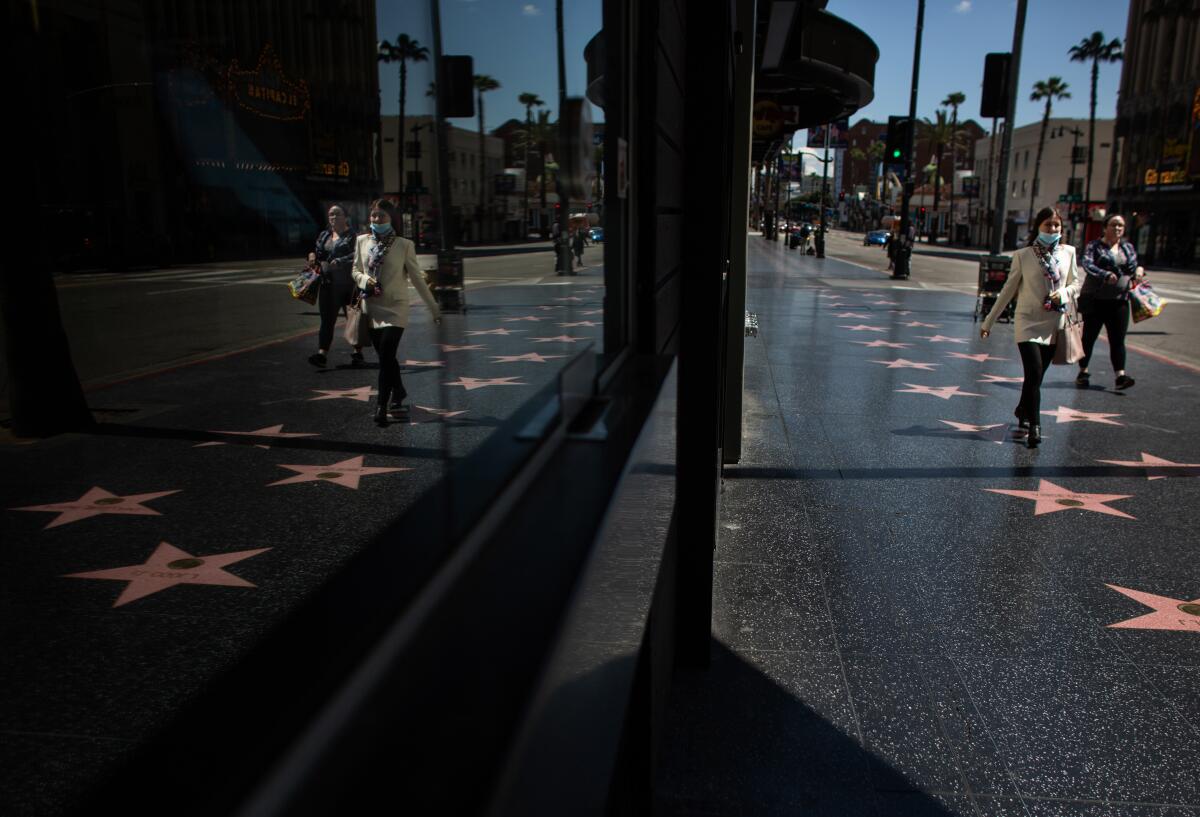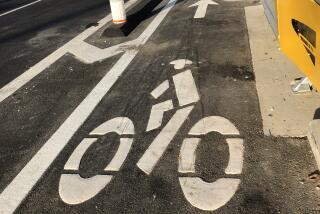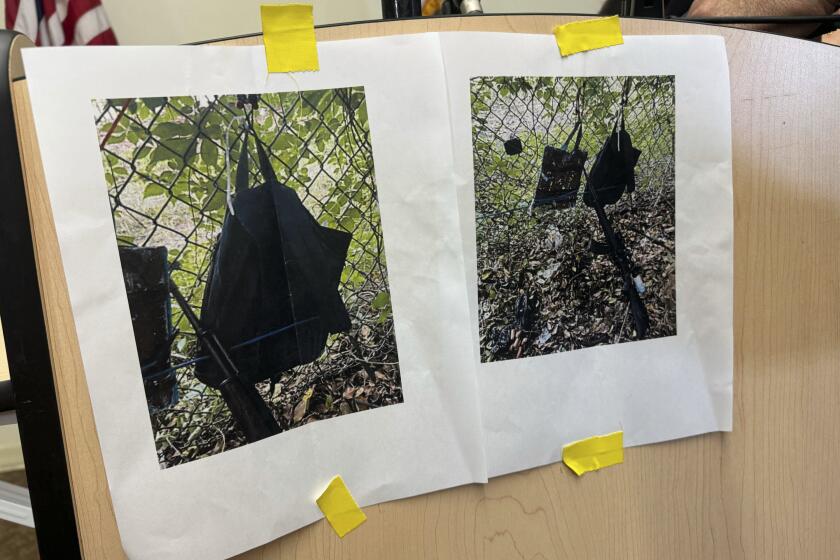Op-Ed: The pandemic made L.A. smaller. Letās keep it that way

Iāve almost forgotten how to drive. From March 2020 until vaccination, I rarely left my neighborhood. Every week or two, I took my car around the block to keep the battery charged. When the lease ended in October, my wife and I decided we would share a single car.
Now that Los Angeles is reopening, Iāve been using that car a bit more, but Iām hard-pressed to access my own internal routes and shortcuts, the mind maps that all Angelenos develop. I used to know how to get around automatically ā when to drive local streets rather than the freeways, where and when Iād find a shady parking space.
I can still operate a vehicle, but that other stuff, the intuitive ebb and flow of moving through Los Angeles ā I canāt take it for granted anymore. Recently, going from Mid-City to Little Tokyo, I got mired in traffic on Olympic, forgetting entirely my favorite east-west alternative, James M. Wood Boulevard.
This is an inconvenience, but itās less a problem than an opportunity. What I mean is that Iām experiencing Los Angeles anew, relearning it. Like all of us, I am being presented with the chance to reimagine the city and the way I live in it.
And why not? Do we really want to return to the way we were prior to the pandemic? I know that I do not. I agree with Brian Taylor, director of UCLAās Institute of Transportation Studies, who in June posed the big traffic question: Will we āresort backā to our old living patterns? If we do, he said, weāll also go back to getting nowhere fast.
In this moment of transition, then, Iād like to suggest a frame of reference that I found useful during lockdown: keeping the city small.
For me, this means walking. During the pandemic, I tried to do it daily. It was my recreation, my way to participate in the city as a public space even when the streets were nearly empty.
Los Angeles is not a walking city. But what if we behaved as if it were?
Walking roots us. It connects us to our surroundings; it fosters intimacy because it requires that we be present, paying attention here and now. When you walk, you arenāt moving fast or far enough to lose track of where youāre going.
Walking the same streets every day, I see the same people, my neighbors. Whether or not we know each other, we nod or say hello. There are ways to encourage this level of connectedness even in a city as far-flung as Los Angeles. There are pandemic innovations we ought to keep.
Slow Streets L.A. is one example. This program, developed to encourage pedestrianism and safe outdoor interaction during lockdown, was inaugurated in May 2020 to mitigate the closure of parks and hiking trails. It uses barriers to discourage automobile traffic and encompasses 50 miles of streets in 30 neighborhoods.
Much like allowing restaurants to take over parking lanes for outdoor dining, Slow Streets L.A. should be judiciously expanded and made permanent to affirm that every street is shared space.
Even before COVID-19, Los Angeles was attempting a transition from cars and freeways to a more varied cityscape. Light rail, denser and more affordable housing, increased emphasis on neighborhoods where at least some of what you need is close by. These are the building blocks of a city that aspires to be humane.
Shifting physical infrastructure from fast to slower is just one kind of connection the last year and a half has encouraged. In late 2019, just a month or so before the coronavirus was detected, Los Angeles Mayor Eric Garcetti convened what he called the Civic Memory Working Group. (Full disclosure: I was a member.) The pandemic pushed a lot of people to look back as a way of thinking about how to move forward. Especially after the George Floyd protests, the working group sought to do that on a larger basis.
The groupās recommendations include establishing a city historianās office, renewing attention to Indigenous narratives and rethinking the cityās monuments in order to reframe its ādifficult histories.ā For instance, the Chinese Massacre of 1871, which we should acknowledge, 150 years later, on Oct. 24.
Whatās at stake is how we understand place, how it tells us who we are. If the pandemic has had a silver lining, it is that it makes us think hard about our relationships to one another and the city itself. We have made the city small because we had to. Now we can keep it small ā connected and self-reflective, emphasizing a human landscape ā by choice.
So far, my own slowdown has kept me walking. Driving less means seeing more closely, as well as saving energy, time and money. At the same time, Iām working on my workarounds, how to get to downtown or to Silver Lake or Palms or Venice using muscle memory (even if I think twice before making the trip).
At some point, my old internal maps will kick back in. When they do, I hope Los Angeles will have embraced the opportunities disruption has presented. Letās keep the city small.
David L. Ulin is a contributing writer to Opinion.
More to Read
A cure for the common opinion
Get thought-provoking perspectives with our weekly newsletter.
You may occasionally receive promotional content from the Los Angeles Times.










